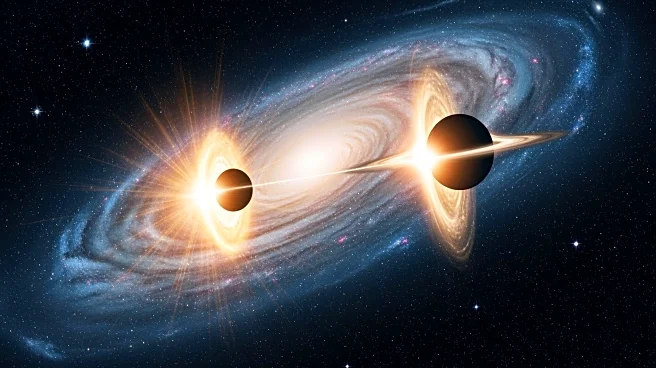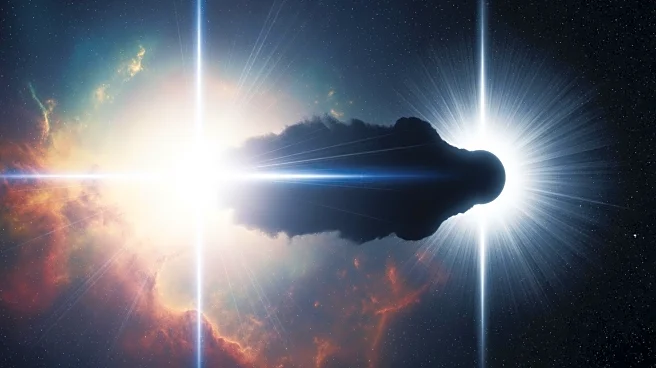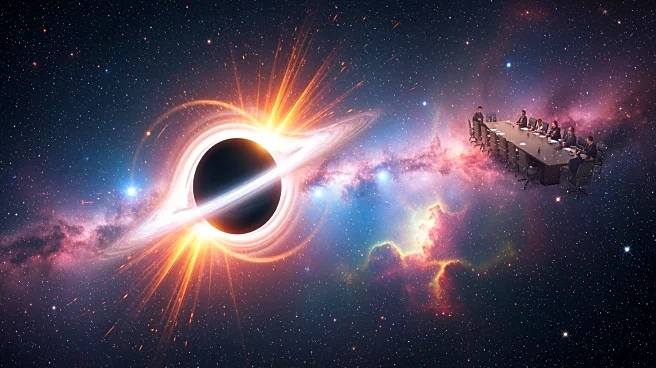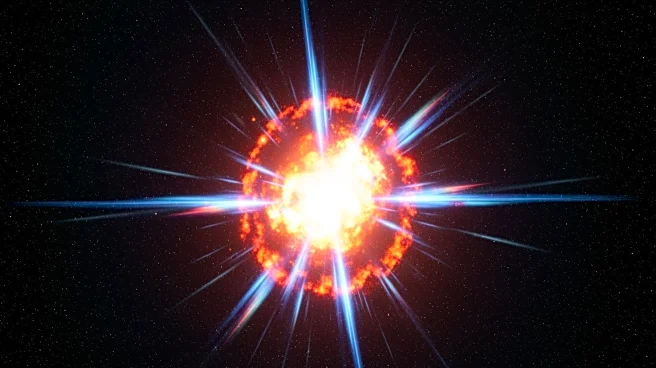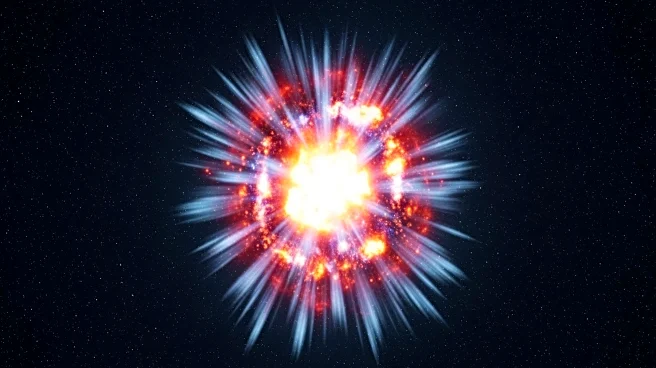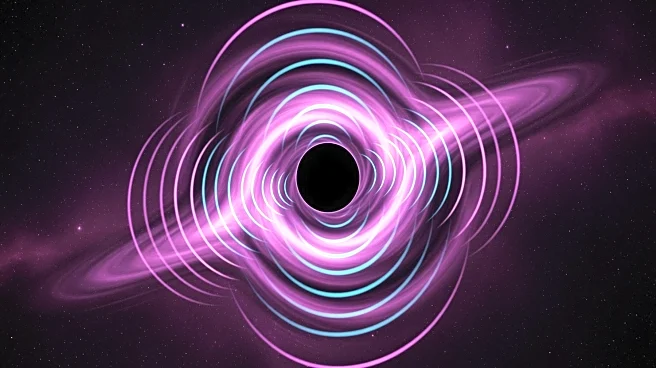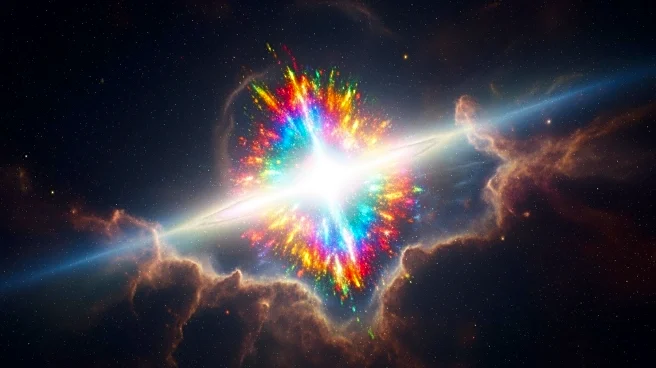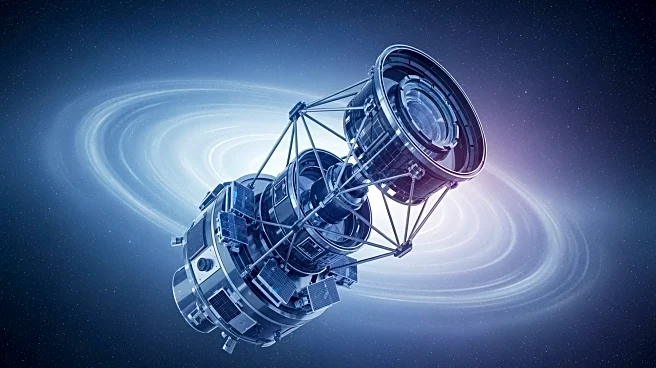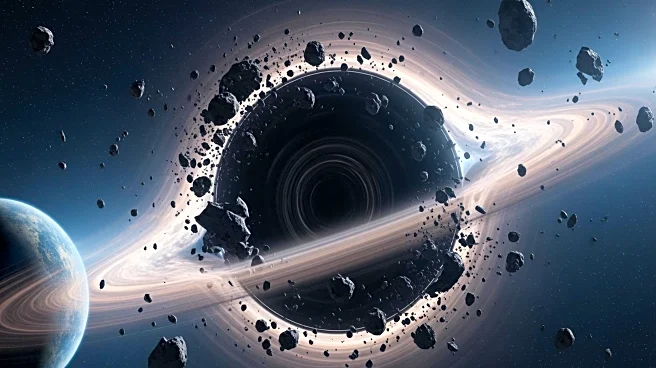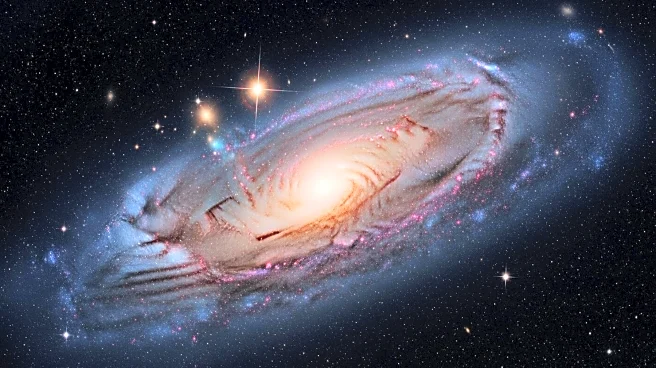What's Happening?
Astronomers have observed an extraordinary gamma-ray burst, GRB 250702B, which is believed to be the result of a black hole consuming a star from within. This event, detected by NASA's Fermi space telescope,
lasted for an unprecedented seven hours, far exceeding the typical duration of gamma-ray bursts. The burst was initially detected on July 2, 2025, and has been studied using various telescopes, including the European Very Large Telescope and the Hubble Space Telescope. The burst's host galaxy, located near the constellations Aquila and Scutum, is a massive, asymmetric, and dusty galaxy. The event has challenged existing models of gamma-ray bursts, as it exhibited characteristics incompatible with known progenitors.
Why It's Important?
The observation of GRB 250702B provides new insights into the behavior of black holes and the mechanisms behind gamma-ray bursts. This event suggests that black holes can consume stars in a manner previously unconsidered, potentially leading to the discovery of new gamma-ray burst progenitor systems. The findings could significantly impact our understanding of black hole dynamics and the conditions necessary for such cosmic events. The research also highlights the importance of international collaboration and advanced telescopic technology in uncovering the mysteries of the universe.
What's Next?
Further analysis and data collection are expected as astronomers continue to study the afterglow of GRB 250702B. The scientific community anticipates a NASA press release and accompanying animations to provide more detailed insights into the event. The ongoing government shutdown may delay these releases. Researchers will likely explore the implications of this discovery on existing astrophysical models and consider the potential for similar events in other galaxies.
Beyond the Headlines
The discovery of GRB 250702B may lead to a reevaluation of the frequency and conditions under which such gamma-ray bursts occur. It also raises questions about the environments in which black holes can exist and remain active. The event underscores the complexity of cosmic phenomena and the need for continued exploration and technological advancement in astronomy.
